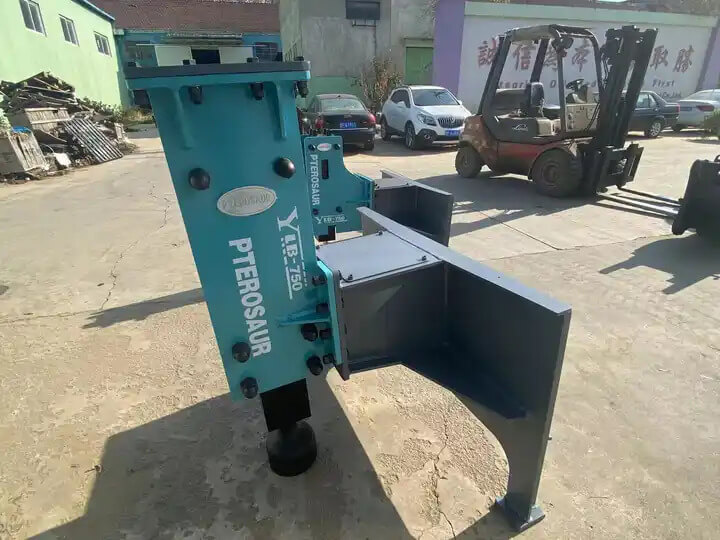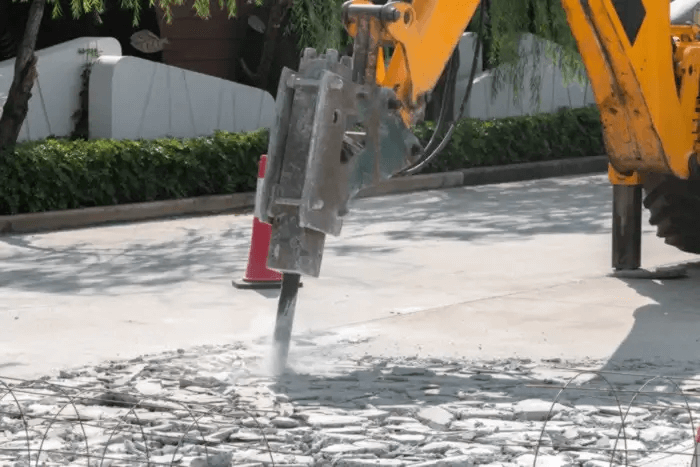Understanding the Importance of Nitrogen in Hydraulic Breakers
Hydraulic breakers are essential tools in construction and demolition, providing powerful impact energy to break through concrete and other hard materials. A crucial aspect of their operation is the use of nitrogen, particularly in the accumulator, which plays a significant role in enhancing the performance of hydraulic breakers. This article will explore why hydraulic breakers need nitrogen, how to charge them, and what can happen if nitrogen levels are insufficient.
The Role of Nitrogen in Hydraulic Breakers
At the heart of a hydraulic breaker’s operation is the accumulator, which is filled with nitrogen gas. This component is vital for storing the energy generated from the hydraulic breaker’s previous blows and the recoil of the piston. When a hydraulic breaker strikes, it creates a force that is effectively amplified by the nitrogen in the accumulator. The accumulated energy is released during subsequent impacts, increasing the striking power and efficiency of the breaker. In essence, nitrogen enhances the performance of hydraulic breakers by boosting the energy delivered with each blow.
How Much Nitrogen Should Be Added?
One common concern among excavator operators is determining the correct amount of nitrogen to add to the accumulator. The pressure in the accumulator is directly influenced by the amount of nitrogen. Therefore, it is crucial to follow the manufacturer’s specifications regarding nitrogen levels. If too much nitrogen is added, the pressure can become excessive, risking damage to the hydraulic breaker. Conversely, insufficient nitrogen will lead to decreased pressure in the accumulator, resulting in reduced striking power. Operators should refer to the hydraulic breaker’s manual to find the recommended nitrogen pressure levels, typically ranging from 16 Bar in the back head to approximately 55 Bar in the accumulator.
Consequences of Nitrogen Shortage
If the nitrogen charge in the accumulator is too low, the hydraulic breaker will not perform at optimal levels. A shortage of nitrogen can lead to a decrease in striking power, making it less effective for demolition tasks. Additionally, if the diaphragm within the accumulator is damaged, it may need to be disassembled for repairs, resulting in downtime and additional costs.
How to Charge Nitrogen in a Hydraulic Breaker
Charging nitrogen into a hydraulic breaker is a straightforward process but requires attention to detail to ensure safety and effectiveness. Here are the steps to properly charge nitrogen:
-
Connect the Pressure Gauge: Start by connecting a pressure gauge to the three-way valve on the hydraulic breaker.
-
Check Existing Pressure: Before adding nitrogen, check the current pressure in the accumulator to determine how much needs to be added.
-
Charge Nitrogen: Use a nitrogen gas charging kit to introduce nitrogen into the accumulator. Follow the manufacturer’s guidelines for the correct pressure levels.
-
Monitor Pressure: As you charge the accumulator, continuously monitor the pressure gauge to avoid over-inflation.
-
Finalize Charging: Once the desired pressure is achieved, disconnect the nitrogen kit and ensure all connections are secure.
Conclusion
Understanding the importance of nitrogen in hydraulic breakers is crucial for operators aiming to maximize the efficiency and longevity of their equipment. By ensuring the accumulator is properly charged with nitrogen, operators can enhance the striking power of their hydraulic breakers, leading to more effective and efficient demolition work. Regular maintenance, including monitoring nitrogen levels and adhering to charging procedures, will help maintain the performance of hydraulic breakers, ultimately contributing to successful project outcomes.




































